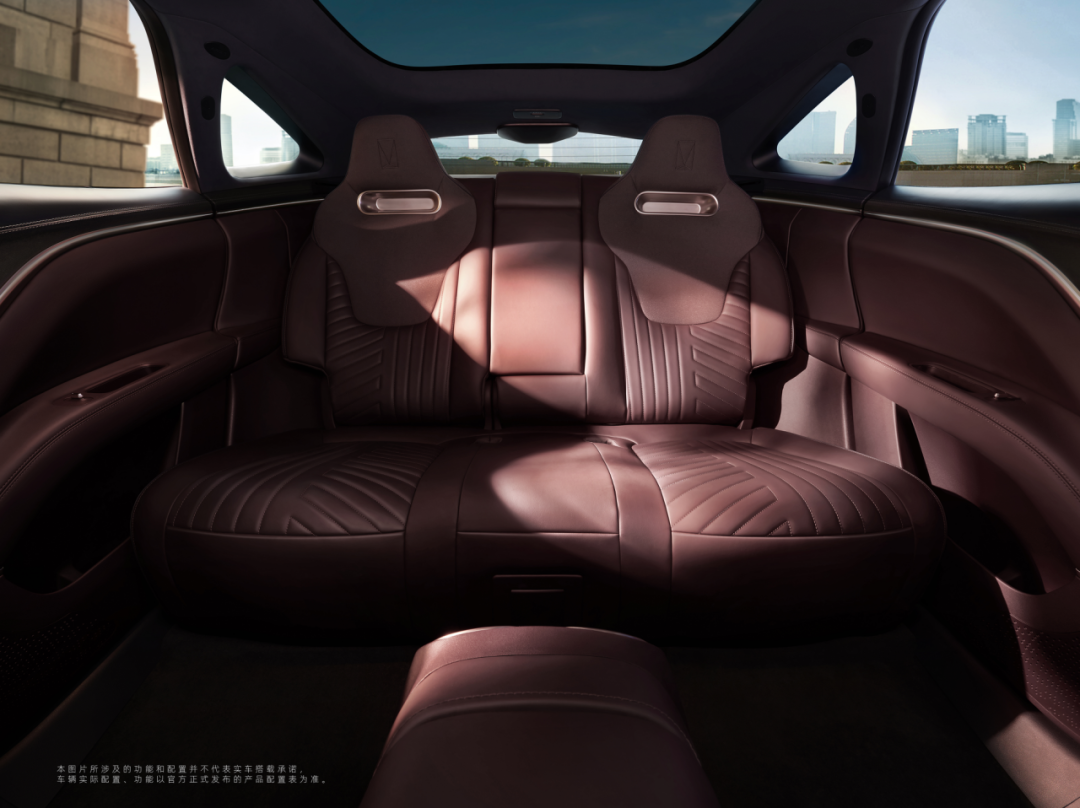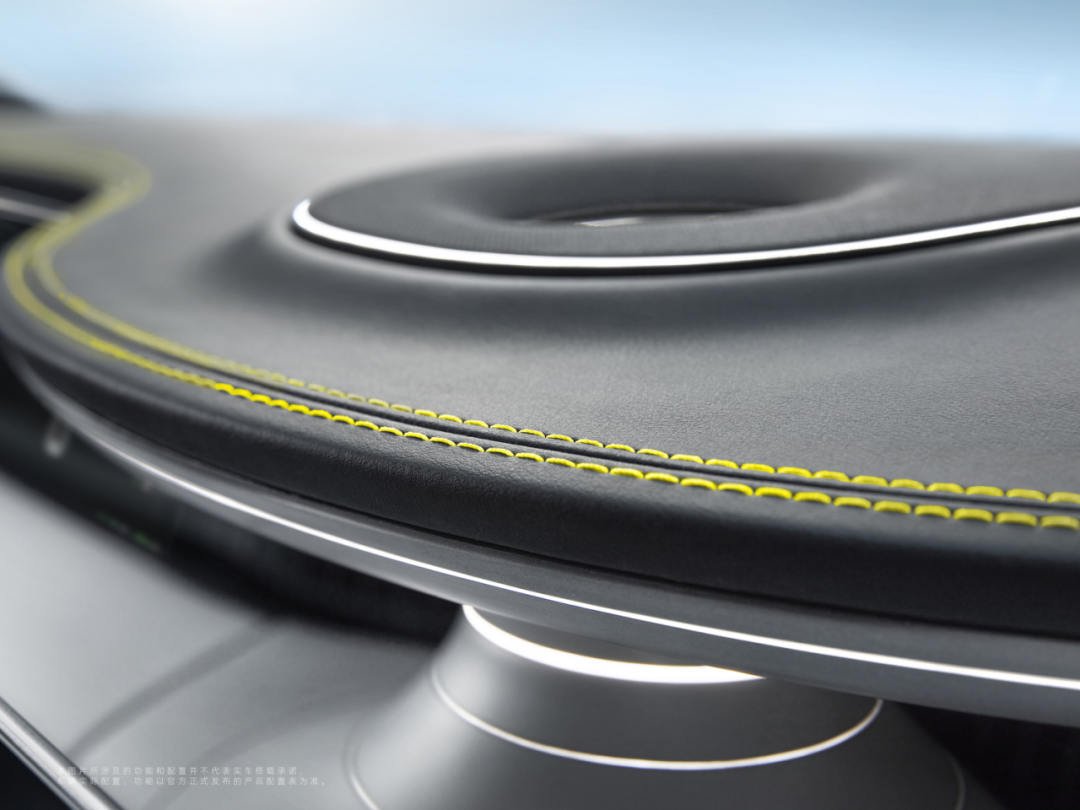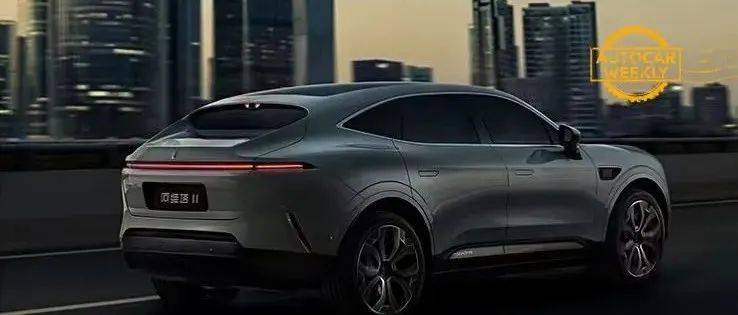Philosophical Automakers
By Karakush
This generation of automobile companies are all philosophers.
For example, Zhi Ji’s motto is “goodness is like water”, extracting the essence of classical Eastern philosophy.
Fei Fan advocates “technology inward, humanity outward”, an epistemological approach that probably resonates with Husserl.
Ji Du insists on identifying itself as a “robot” for “free movement, natural communication, and self-growth,” engaging in consciousness flows discussing Asimov’s laws.
Shalon and ARCFOXxiang both advocate “harmonious coexistence,” clearly upholding the core values of socialism.
Avita presents the concept of “natural luxury” dialectically unified with the idea that “the great path has no form.”
In comparison, the last generation of automobile companies were simple and dull materialists:
Zero Run is “zero-emission, zero-collision, zero-congestion”;
NETA is “electrification, intelligence, and interconnectivity”;
Gao He defines design by scene, car by software, and value by co-creation.
Wei Xiaoli is “user-centered,” exploring “future mobility” to “create a mobile home.”
It’s easy to understand why this generation of automakers is pursuing philosophy. It’s like a weekly meeting where the preordained topic has been discussed by one-third of the group, but it’s not yet time for someone to summarize it. You need to provide a new perspective to express why the world still needs you.
The current main contradiction is between human’s backward memory and the increasing number of intelligent electric vehicle brands. It’s also a contradiction between the limited middle class and their purchasing power and the comprehensive, internalized mid-to-high-end Chinese products.
Philosophy is not just packaging but also a fundamental answer that automakers must provide in the face of competition: Who am I? Where do I come from? Where am I going?
Recently, ACW spoke with Wang Lin, chief marketing officer of Avita Technology. Avita is a typical example. It debuted its brand and first model, Avita 11, in November last year, while “Wei Xiaoli Nazha” completed a round of market validation for its products.
The first impression outsiders have of Avita is its celebrity business model, created by a three-party collaboration of Changan, Huawei, and Ningde Times. This gave it basic traffic.
Avita cannot emphasize enough how complex the relationships are. Changan and Ningde Times are both investors, representing Avita’s first and second largest shareholders; Huawei has a smart driving team stationed in Chongqing for long-term research and development.
Unlike the ruthless “buy-and-sell model” between host manufacturers/suppliers, Huawei did not charge a development fee, and Ningde Times did not charge a development fee or sample fee on the CHN platform, created by the three partners, thinking about long-term investment and development.We can evaluate it as having excellent resources.
However, as an independent brand – “AVETA”, what is it? This is the question that consumers really care about. In May, AVETA-11 opened pre-orders and released its cabin design, giving us a clearer understanding of the AVETA philosophy.
For example, “Casual Luxury”. Some words naturally fit together and are subtle, such as “Casual” + “Good-looking”, making it hard to describe whether it’s Fan Bingbing or Li Dan; “Casual” + “Luxury” also has many interpretations.
Wang Lin explained that if Classic Luxury is like a five-star hotel; then AVETA’s Casual Luxury is like a hell’s kitchen. Gordon Ramsay is a god of fine dining and also very popular.
Affinity is externalized in the design, with eternal curves bending into every large area and detail of the cabin, from the styling that changes from the center console to the extended lines towards the doors, to the vertical undulations of the front and rear armrest boxes, to the inward shaping and shoulder drop of the seats, all avoiding sharp straight lines and right angles and enhancing the overall “surrounding” feeling, providing a comfortable circle for social phobia people.
The curves themselves are deconstructed and complex, and do not match the minimalist coolness of contemporary electric vehicles. This instead highlights the difference in AVETA’s design language.
For example, the cabin’s colors, 11’s two main colors are blue-gray/lemon yellow, as well as Burgundy red/midnight blue. Especially the latter, the German design team says it is inspired by Shanghai’s fascinating nights.
They use NAPPA leather and suede-like material to create color hierarchy and texture; matching with exquisite knobs, which are lighter than champagne gold. The four-seat edition highlights the luxury, and the rear two-person massage seats can recline up to 12 degrees, while the touchpad and wireless fast charging on the center console and the back and front armrest all confront the overly sophisticated Renaissance.
Nailing luxury is a craft; nailing casual luxury also requires some courage.
One is undoubtedly taste, such as this color, “if not applied correctly, it’s a disaster.” It needs to be high-grade and not tacky, and can please the elite group with a strong voice and also cater to the fundamental hedonistic taste of the consumer group.The Second Point Is Confidence. There are risks in creating original designs, and building a distinguished brand requires caution. “When our car was first released, the front face was criticized for various reasons,” said Wang Lin, “but now at the 011 tour exhibition, everyone is taking pictures of the front face and saying it’s the best-looking part.”
011 is a collaboration version between AWEITA and Givenchy’s creative director Matthew M. Williams, based on the number 11. It is currently being exhibited in Chengdu, Guangzhou, Shanghai, Beijing, and Wuhan. We reported on its release in “Curves Belong to God, but Also to AWEITA.”

The originality in the interior design is more prominent. For example, the signature “Vortex Emotional Flow” design is obscured behind the 15.6-inch central touch screen, but this does not affect its precision. The curvature of each light strip has subtle variations, and they are condensed at the bottom layer, suddenly spreading out freely, just like there is an emotional line in one’s life. The angular reflective material in the background reflects a double image, and the broken light is attempting to sway with the flowing light, just like a daydream.

This sculpture is responsible for voice interaction and interacts with ambient lights, music, and fragrance. Compared to the anthropomorphized interactive robots, it is very abstract, neither cute nor weird.
Because “simplicity is the ultimate sophistication, and technology is invisible,” Wang Lin said, “technology should infiltrate the car interior design. Just like in a sci-fi film, the highest level of intelligence is always intangible. Invisibility is a symbol of simple, user-friendly, and natural interaction, which is what technology should look like. We are on our way there.”
From the perspective of the underlying technology, all technology is an extension of humanity. Cars are no exception, and neither are intelligent cars. Therefore, the ultimate goal of human-machine interaction should perhaps be more similar to the intuitive and neural dominance exerted over organs than the current state of conversation and request between humans and the outside world.

This is different from the starting point of defining a car. The original meaning of “AWEITA” is “incarnation,” and they hope to emphasize that this car is yourself, not a good friend or an old buddy. Whether it’s the cocoon-like cabin or the comfortable and invisible technology, they are all trying their best to create a design that integrates with people (rather than coexisting with them).
As for how much of its functions can be displayed, it is still waiting to be experienced in person. AWEITA’s “Homogeneous Fusion” enables all of the car’s features to be “atomized” to provide services that can be called upon, combined, and upgraded, and they are also extended to the interconnectivity of people, cars, and homes.Many brand models have similar structures. Breaking it down, it’s a basic task, with the short-term challenge being the experience, and the long-term challenge being true intelligent depth.
“Its current form is not yet its final form,” said Wang Lin, “based on 400 TOPS computing power and 34 sensors, Avita still has a lot of expandable space.”
Regardless of how it expands, the “intangible” concept will continue. “If done correctly, it will be the explosive hit,” Wang Lin believes that Avita is such an original.
Based on a firm philosophy, a closed-loop response has been formed regarding the identity of Avita.
For example, “Who are Avita’s users?” is also an intangible conclusion.
Wang Lin believes that cars are high-value, low-frequency products, and when users choose brands, they will match their values. Therefore, in positioning, Avita did not adopt traditional demographic characteristics, but divided people into two categories based on questions.
One is whether you are defined by society, such as whether you believe in success psychology. The other is whether you are more concerned about the greater good, such as environmental protection and world peace, or more concerned about the self, such as agreeing that “I” should use life to enjoy life.
The ultimate core users of Avita are those who are not defined by society and highly concerned about themselves, as well as peripheral groups who are more philanthropic due to their families.
Or to use Wang Lin’s summary, “I don’t define others, and I don’t let others define me.”
This is a very high standard for being a human being, and it is also the state that Avita aspires to. “We may still be halfway there, but we will reach it. We hope to attract and be attracted by people who share our values,” Wang Lin said, “We conducted some styling surveys, and we can clearly see that the people who love us the most are this type of people.”
How to attract this high-quality group of people is Wang Lin’s important task. Today, the relationship between car companies and users has been expanded to operations, services, space, activities, and even every product interaction.
“It’s not easy, everything has to be done right,” Wang Lin said, “Both things and people are essentially choices, so the benchmark for the choice is very important. I am very fortunate that we have come to today, and the benchmark for our choices has always been the user’s perspective.”
Currently, the Avita 11 is still in the sprint production stage, and the APP has become the main platform connecting users with Avita. “Some brands define users as car owners, but Avita’s definition is broader. As long as you appreciate Avita and share the same set of values and lifestyle, you are my user.”
In the APP community, users’ posts are classified into four categories: interesting and useful, useful but not interesting, uninteresting and useless, and interesting but useless. Even before owning a car, people shared about dogs, mosquito coils, Starbucks, Liu Xinghong, and everything in their daily lives. Even with a car, the car is only a part of their lives.
“We have a large amount of private traffic, and the participation is very high. After the 1115 brand was released last year, we did a lot of things step by step, from the first video ‘through tech’s eyes’, to the day when the first Weibo hot search broke a hundred million, to the launch of the 011 model, to the one-year anniversary of the 520 model… Various information releases, both online and offline activities have truly attracted everyone’s attention.”
Especially after the 520 model was available for reservation, the order volume was said to be very good. “I can’t say it far exceeds expectations because it’s a paradox. We are very clear about its product strength and the user’s judgment. Although we were still surprised by the data, it should be a bestseller. The data is just a result, and you should have known it earlier.” Wang Lin confidently stated, “When people see the actual car, it should be even more popular.”
Wang Lin often hangs out on the APP. She is very proud that users call her “Sister Wang who takes great pictures.” “Our actual product is always better than the video, and the video is always better than the pictures.”
In the third quarter, Avita will officially release the complete configuration and price of the 11 and 011 models, and start deliveries within the year. Wang Lin and her team already have a long list of tasks.
Avita is building its own sales channels. They will also consider entering the Huawei mall, which may be more effective in the short term. However, direct sales will be viewed as a product to be developed and will be included in the overall design and planning. The cities currently under construction, including Beijing, Shanghai, Guangzhou, Shenzhen, Chongqing, Chengdu, and Hangzhou, are expected to be launched in July or August.
“When you see our store, you know that it is not just a showroom. It has a 360-degree full experience.”This is a familiar and skilled format for Wang Lin. Prior to joining Avita, she had a wide cross-border background, from InterContinental hotels to Chanel to Apple, essentially based on managing user experiences.

Especially at Apple, in fact, she was the first local employee of Apple Retail in Greater China. In an industry where the collective aspiration is to become the Apple of the automotive world, this experience may be an advantage. Apple doesn’t actually call itself a mobile phone company or a luxury brand. It’s a lifestyle brand, and its creed is to enrich lives.
It may sound ethereal, but it’s basically true. Any great product, like any great love affair, is really just doing one thing, and that is to successfully enter people’s lives. Other fleeting connections will eventually pass by.
Avita has a beginning for life.
“We are not a luxury brand, high-end is a designation, and in essence, it is a lifestyle brand. ” Wang Lin said, “Everything is related to people. Emotions and needs of people are the starting and ending points, digging to the bottom of the human nature to explore those unmet needs. It sounds a bit philosophical, but when you actually start doing things, you will know why it is designed in this way, and why this choice is made.”
This article is a translation by ChatGPT of a Chinese report from 42HOW. If you have any questions about it, please email bd@42how.com.
